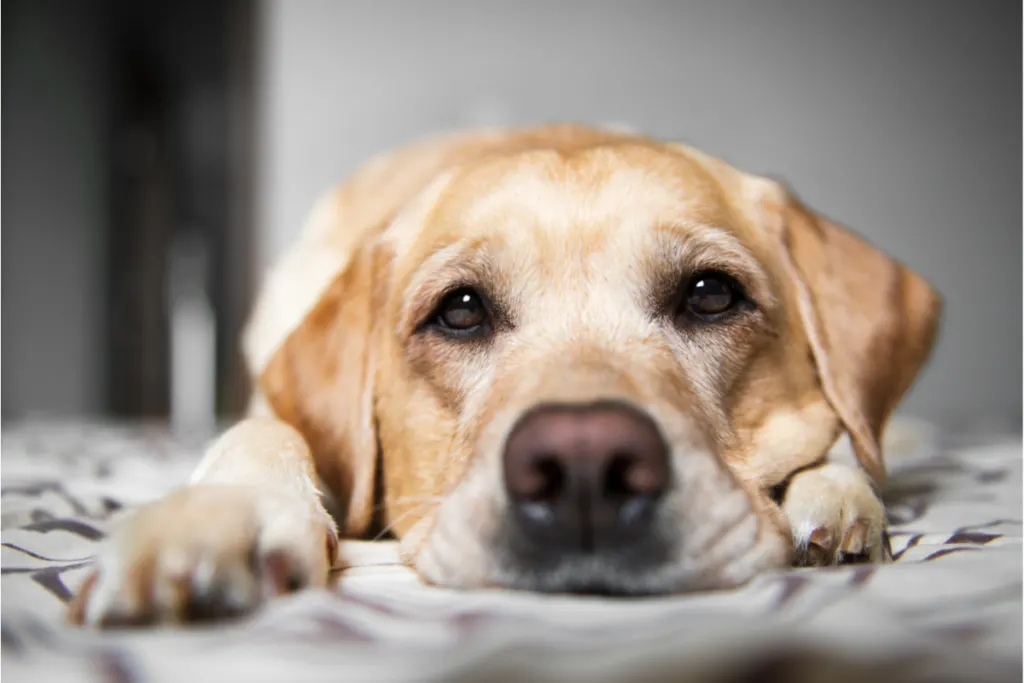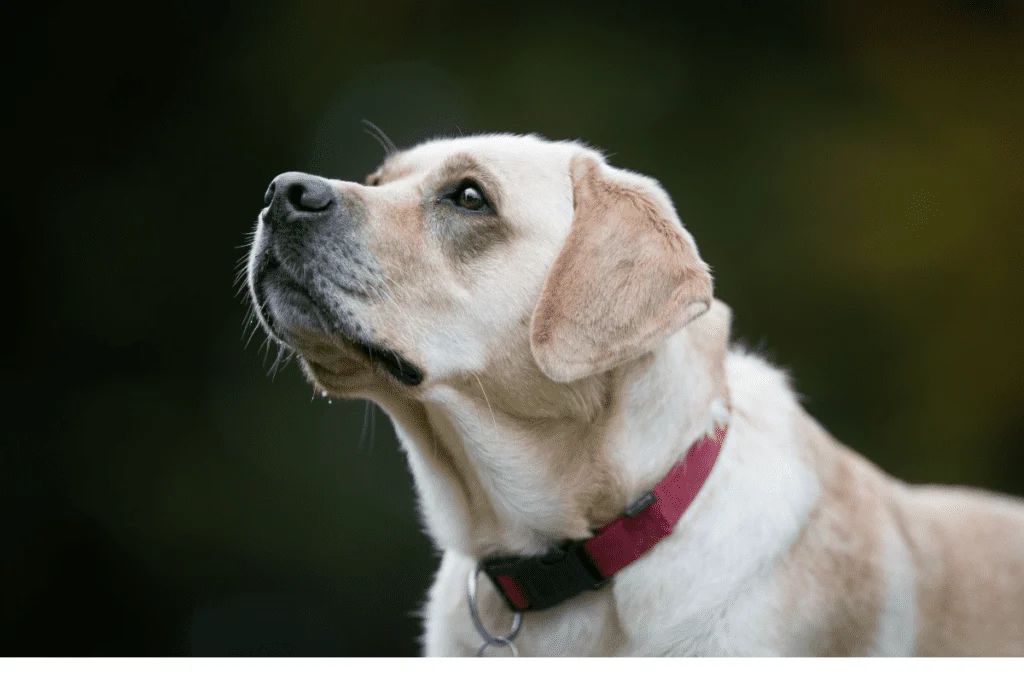Most of us live crazy lives, trying to fit 36 hours’ worth of work into 24 hours while still trying to get a good night’s sleep.
Leaving your Labrador home alone is inevitable, but how long is too long, and when is your guilt justified?
Eight consecutive hours is the maximum length of time a Labrador can be left unattended, although ideally, Labradors shouldn’t be left alone for more than three hours. Variables such as hyperactivity, age, and anxiety levels affect how long a specific Labrador can be left alone.

While people railed against the constraints of lockdown, the Labradors reveled in having their owners at home all day.
Leaving their Labradors at home alone can be just as hard on the owners as it is on their dogs.
Knowing how much time alone a Labrador can tolerate is essential for ensuring peace of mind when owners are forced to leave their Labradors at home.
Click Here to Jump to a Section
How Long Can Labradors Be Left Alone?
The RSPCA surveyed owners’ attitudes towards leaving their pets alone.
The survey revealed that 21% of dog owners thought leaving the dogs unattended for more than 24 hours was acceptable, while 39% admitted to leaving their dogs home alone for 7 or more hours.
While many dog lovers have been shocked by these statistics, it is relatively easy to see how the situation could arise. Most people work 8 hours or more, 5 days of the week.
Once commute time, social visits, and errands have been completed, your Labrador could easily have been left unattended for more than 10 hours every day.
Most well-adjusted adult Labradors can tolerate being left alone for 6 to 8 hours, occasionally.
The more time a Labrador spends with “their” people, the happier and more balanced they will become. Ideally, a Labrador should not be left alone for more than 3 to 4 hours at a time.
Individual Variables Influencing “Time Alone” Tolerance
Three variables have a significant influence on how well a Labrador can tolerate being left alone:
- Age of the Labrador
- Individual energy levels
- Anxiety and strength of owner bonding
Age-Dependent Tolerance For Being Left Alone
When deciding how long a Labrador should be left alone, it is essential to consider their age: puppy, adult, senior.
Rules For Leaving A Labrador Puppy Alone
Bringing a Labrador puppy home is an exciting adventure for you, but for your puppy, the new people and places may be a little overwhelming.
Up until now, they would have never been left alone. When the humans left, they still had their mom and littermates to keep them company.
Teaching your puppy to be left alone will take time and patience. As a general guide, a Labrador puppy should not be left alone longer than they can control their bowel movements.
A puppy has an immature gastrointestinal tract and, at 10 weeks, will still need to go to the bathroom every 50 to 90 minutes.
The general rule regarding puppy age and time spent alone:
Between 3 to 6 months, the puppies’ age is equivalent to the length of time that they can be left unattended.
The following is an approximation or general guide to how long a Labrador puppy can be left alone:
- 6 to 10 weeks: no more than 1 hour
- 10 -12 weeks: 2 hours
- 3 months: 3 hours
- 4 months: 4 hours
- 5 months: 5 hours
- 6 months: 6 hours
- Over 6 months: 6 to 8 hours
(Source: AKC)
Be sure to watch the amazing video below – it shows exactly what your Lab may be doing while you’re away. An eye opening video!
Rules For Leaving A Senior Labrador Alone
Most people assume that because a senior Labrador is more sedentary than their younger counterparts, they can be left alone for extended periods.
While your senior Labrador is less likely to show their distress, they may actually require more supervision than a Labrador in their prime.
As Labradors age, they may develop conditions that cause them to lose control of their bladders or bowels. Incontinent Labradors or Labradors with poor bowel control will need to be let out into the yard more often for toilet breaks.
These golden oldies may also start suffering from age-related health issues, e.g., cataracts and blindness. Many senior Labradors struggling with health conditions (especially those affecting their sight or hearing) will start relying more on their owners for security and comfort.

Leaving these owner-dependent Labradors for hours on end can cause unacceptable levels of anxiety and distress.
As a general rule, senior Labradors should not be left alone for more than 2 to 6 hours, depending on their physical condition and health.
(Sources: AKC)
Energy Levels And Spending Time Alone
Labradors are high-energy dogs, with Labradors from working lines having more energy than Labradors from pet lines.
This energy needs to be given a constructive outlet; a bored, frustrated Labrador is an agent of chaos!
One study investigated the effects of exercise and the number of hours spent alone of hyperactivity and impulsivity amongst Labradors.
Researchers found that Labradors who received less than 1 hour of exercise per day had an impulsivity score of 2.5 while dogs who exercised for more than 3 hours a day had a score of 4.75.
Labradors left alone for 6 to 8 hours a day had an impulsivity score of 3.48, while dogs’ lefts alone for less than 3 hours had a score of 3.99.
While the amount of exercise had a greater effect on a Labrador’s hyperactivity, the amount of time spent alone also impacted the Labrador’s impulsivity.
Labradors left alone for long periods are more likely to be hyperactive and difficult to control when their owners arrive home and take longer to settle down.
Hyperactive Labradors are more likely to tolerate being left alone if:
- They receive adequate mental and physical exercise
- They are allowed to play with enrichment toys during their owner’s absence
- They’re allowed to play with companions during the day, e.g., at doggy day-care
(Source: Journal of Translational Psychiatry)
The Effect Of Anxiety On Tolerance For Being Left Alone
Like humans, Labradors exist on a spectrum of anxiety versus confidence; some Labradors are more anxious while others don’t know what the word means!
Anxious animals will often form tighter bonds with other animals or humans.
In single-dog homes or with people-orientated dogs, like the Labrador, it is not unusual to find Labradors who have developed a strong dependency on their owners.
To these anxious dogs, their owner is literally their world, and they need the owners to feel calm, confident, and happy. When anxious Labradors are left alone, they are more likely to struggle with debilitating separation anxiety.
Various strategies can be helpful in helping an anxious Labrador learn to tolerate being left alone:
- Acclimating the Labrador to being alone, using a systematic training system
- White noise machines
- Crate training, e.g., anxious dogs like the safety of a “cave” or “den.”
An excellent white noise machine that we’ve used time and again is this one from Douni. It has lots of different settings, and is the perfect way to alleviate anxiety and boredom for your Lab while you’re away!
Final Thoughts
Ideally, adult Labradors should not be left alone for more than 3 to 4 hours per day, but they can be taught to tolerate being left alone for 6 to 8 hours.
Variables specific to individual Labradors will affect how long they can tolerate being left alone at home.
